- Home
- Walter Isaacson
Walter Isaacson Great Innovators e-book boxed set Page 10
Walter Isaacson Great Innovators e-book boxed set Read online
Page 10
Woz had already begun thinking about the next version of the machine, so they started calling their current model the Apple I. Jobs and Woz would drive up and down Camino Real trying to get the electronics stores to sell it. In addition to the fifty sold by the Byte Shop and almost fifty sold to friends, they were building another hundred for retail outlets. Not surprisingly, they had contradictory impulses: Wozniak wanted to sell them for about what it cost to build them, but Jobs wanted to make a serious profit. Jobs prevailed. He picked a retail price that was about three times what it cost to build the boards and a 33% markup over the $500 wholesale price that Terrell and other stores paid. The result was $666.66. “I was always into repeating digits,” Wozniak said. “The phone number for my dial-a-joke service was 255-6666.” Neither of them knew that in the Book of Revelation 666 symbolized the “number of the beast,” but they soon were faced with complaints, especially after 666 was featured in that year’s hit movie, The Omen. (In 2010 one of the original Apple I computers was sold at auction by Christie’s for $213,000.)
The first feature story on the new machine appeared in the July 1976 issue of Interface, a now-defunct hobbyist magazine. Jobs and friends were still making them by hand in his house, but the article referred to him as the director of marketing and “a former private consultant to Atari.” It made Apple sound like a real company. “Steve communicates with many of the computer clubs to keep his finger on the heartbeat of this young industry,” the article reported, and it quoted him explaining, “If we can rap about their needs, feelings and motivations, we can respond appropriately by giving them what they want.”
By this time they had other competitors, in addition to the Altair, most notably the IMSAI 8080 and Processor Technology Corporation’s SOL-20. The latter was designed by Lee Felsenstein and Gordon French of the Homebrew Computer Club. They all had the chance to go on display during Labor Day weekend of 1976, at the first annual Personal Computer Festival, held in a tired hotel on the decaying boardwalk of Atlantic City, New Jersey. Jobs and Wozniak took a TWA flight to Philadelphia, cradling one cigar box with the Apple I and another with the prototype for the successor that Woz was working on. Sitting in the row behind them was Felsenstein, who looked at the Apple I and pronounced it “thoroughly unimpressive.” Wozniak was unnerved by the conversation in the row behind him. “We could hear them talking in advanced business talk,” he recalled, “using businesslike acronyms we’d never heard before.”
Wozniak spent most of his time in their hotel room, tweaking his new prototype. He was too shy to stand at the card table that Apple had been assigned near the back of the exhibition hall. Daniel Kottke had taken the train down from Manhattan, where he was now attending Columbia, and he manned the table while Jobs walked the floor to inspect the competition. What he saw did not impress him. Wozniak, he felt reassured, was the best circuit engineer, and the Apple I (and surely its successor) could beat the competition in terms of functionality. However, the SOL-20 was better looking. It had a sleek metal case, a keyboard, a power supply, and cables. It looked as if it had been produced by grown-ups. The Apple I, on the other hand, appeared as scruffy as its creators.
CHAPTER SIX
THE APPLE II
Dawn of a New Age
An Integrated Package
As Jobs walked the floor of the Personal Computer Festival, he came to the realization that Paul Terrell of the Byte Shop had been right: Personal computers should come in a complete package. The next Apple, he decided, needed to have a great case and a built-in keyboard, and be integrated end to end, from the power supply to the software. “My vision was to create the first fully packaged computer,” he recalled. “We were no longer aiming for the handful of hobbyists who liked to assemble their own computers, who knew how to buy transformers and keyboards. For every one of them there were a thousand people who would want the machine to be ready to run.”
In their hotel room on that Labor Day weekend of 1976, Wozniak tinkered with the prototype of the new machine, to be named the Apple II, that Jobs hoped would take them to this next level. They brought the prototype out only once, late at night, to test it on the color projection television in one of the conference rooms. Wozniak had come up with an ingenious way to goose the machine’s chips into creating color, and he wanted to see if it would work on the type of television that uses a projector to display on a movie-like screen. “I figured a projector might have a different color circuitry that would choke on my color method,” he recalled. “So I hooked up the Apple II to this projector and it worked perfectly.” As he typed on his keyboard, colorful lines and swirls burst on the screen across the room. The only outsider who saw this first Apple II was the hotel’s technician. He said he had looked at all the machines, and this was the one he would be buying.
To produce the fully packaged Apple II would require significant capital, so they considered selling the rights to a larger company. Jobs went to Al Alcorn and asked for the chance to pitch it to Atari’s management. He set up a meeting with the company’s president, Joe Keenan, who was a lot more conservative than Alcorn and Bushnell. “Steve goes in to pitch him, but Joe couldn’t stand him,” Alcorn recalled. “He didn’t appreciate Steve’s hygiene.” Jobs was barefoot, and at one point put his feet up on a desk. “Not only are we not going to buy this thing,” Keenan shouted, “but get your feet off my desk!” Alcorn recalled thinking, “Oh, well. There goes that possibility.”
In September Chuck Peddle of the Commodore computer company came by the Jobs house to get a demo. “We’d opened Steve’s garage to the sunlight, and he came in wearing a suit and a cowboy hat,” Wozniak recalled. Peddle loved the Apple II, and he arranged a presentation for his top brass a few weeks later at Commodore headquarters. “You might want to buy us for a few hundred thousand dollars,” Jobs said when they got there. Wozniak was stunned by this “ridiculous” suggestion, but Jobs persisted. The Commodore honchos called a few days later to say they had decided it would be cheaper to build their own machine. Jobs was not upset. He had checked out Commodore and decided that its leadership was “sleazy.” Wozniak did not rue the lost money, but his engineering sensibilities were offended when the company came out with the Commodore PET nine months later. “It kind of sickened me. They made a real crappy product by doing it so quick. They could have had Apple.”
The Commodore flirtation brought to the surface a potential conflict between Jobs and Wozniak: Were they truly equal in what they contributed to Apple and what they should get out of it? Jerry Wozniak, who exalted the value of engineers over mere entrepreneurs and marketers, thought most of the money should be going to his son. He confronted Jobs personally when he came by the Wozniak house. “You don’t deserve shit,” he told Jobs. “You haven’t produced anything.” Jobs began to cry, which was not unusual. He had never been, and would never be, adept at containing his emotions. He told Steve Wozniak that he was willing to call off the partnership. “If we’re not fifty-fifty,” he said to his friend, “you can have the whole thing.” Wozniak, however, understood better than his father the symbiosis they had. If it had not been for Jobs, he might still be handing out schematics of his boards for free at the back of Homebrew meetings. It was Jobs who had turned his ingenious designs into a budding business, just as he had with the Blue Box. He agreed they should remain partners.
It was a smart call. To make the Apple II successful required more than just Wozniak’s awesome circuit design. It would need to be packaged into a fully integrated consumer product, and that was Jobs’s role.
He began by asking their erstwhile partner Ron Wayne to design a case. “I assumed they had no money, so I did one that didn’t require any tooling and could be fabricated in a standard metal shop,” he said. His design called for a Plexiglas cover attached by metal straps and a rolltop door that slid down over the keyboard.
Jobs didn’t like it. He wanted a simple and elegant design, which he hoped would set Apple apart from the other machines, with their c
lunky gray metal cases. While haunting the appliance aisles at Macy’s, he was struck by the Cuisinart food processors and decided that he wanted a sleek case made of light molded plastic. At a Homebrew meeting, he offered a local consultant, Jerry Manock, $1,500 to produce such a design. Manock, dubious about Jobs’s appearance, asked for the money up front. Jobs refused, but Manock took the job anyway. Within weeks he had produced a simple foam-molded plastic case that was uncluttered and exuded friendliness. Jobs was thrilled.
Next came the power supply. Digital geeks like Wozniak paid little attention to something so analog and mundane, but Jobs decided it was a key component. In particular he wanted—as he would his entire career—to provide power in a way that avoided the need for a fan. Fans inside computers were not Zen-like; they distracted. He dropped by Atari to consult with Alcorn, who knew old-fashioned electrical engineering. “Al turned me on to this brilliant guy named Rod Holt, who was a chain-smoking Marxist who had been through many marriages and was an expert on everything,” Jobs recalled. Like Manock and others meeting Jobs for the first time, Holt took a look at him and was skeptical. “I’m expensive,” Holt said. Jobs sensed he was worth it and said that cost was no problem. “He just conned me into working,” said Holt, who ended up joining Apple full-time.
Instead of a conventional linear power supply, Holt built one like those used in oscilloscopes. It switched the power on and off not sixty times per second, but thousands of times; this allowed it to store the power for far less time, and thus throw off less heat. “That switching power supply was as revolutionary as the Apple II logic board was,” Jobs later said. “Rod doesn’t get a lot of credit for this in the history books, but he should. Every computer now uses switching power supplies, and they all rip off Rod’s design.” For all of Wozniak’s brilliance, this was not something he could have done. “I only knew vaguely what a switching power supply was,” Woz admitted.
Jobs’s father had once taught him that a drive for perfection meant caring about the craftsmanship even of the parts unseen. Jobs applied that to the layout of the circuit board inside the Apple II. He rejected the initial design because the lines were not straight enough.
This passion for perfection led him to indulge his instinct to control. Most hackers and hobbyists liked to customize, modify, and jack various things into their computers. To Jobs, this was a threat to a seamless end-to-end user experience. Wozniak, a hacker at heart, disagreed. He wanted to include eight slots on the Apple II for users to insert whatever smaller circuit boards and peripherals they might want. Jobs insisted there be only two, for a printer and a modem. “Usually I’m really easy to get along with, but this time I told him, ‘If that’s what you want, go get yourself another computer,’” Wozniak recalled. “I knew that people like me would eventually come up with things to add to any computer.” Wozniak won the argument that time, but he could sense his power waning. “I was in a position to do that then. I wouldn’t always be.”
Mike Markkula
All of this required money. “The tooling of this plastic case was going to cost, like, $100,000,” Jobs said. “Just to get this whole thing into production was going to be, like, $200,000.” He went back to Nolan Bushnell, this time to get him to put in some money and take a minority equity stake. “He asked me if I would put $50,000 in and he would give me a third of the company,” said Bushnell. “I was so smart, I said no. It’s kind of fun to think about that, when I’m not crying.”
Bushnell suggested that Jobs try Don Valentine, a straight-shooting former marketing manager at National Semiconductor who had founded Sequoia Capital, a pioneering venture capital firm. Valentine arrived at the Jobses’ garage in a Mercedes wearing a blue suit, button-down shirt, and rep tie. His first impression was that Jobs looked and smelled odd. “Steve was trying to be the embodiment of the counterculture. He had a wispy beard, was very thin, and looked like Ho Chi Minh.”
Valentine, however, did not become a preeminent Silicon Valley investor by relying on surface appearances. What bothered him more was that Jobs knew nothing about marketing and seemed content to peddle his product to individual stores one by one. “If you want me to finance you,” Valentine told him, “you need to have one person as a partner who understands marketing and distribution and can write a business plan.” Jobs tended to be either bristly or solicitous when older people offered him advice. With Valentine he was the latter. “Send me three suggestions,” he replied. Valentine did, Jobs met them, and he clicked with one of them, a man named Mike Markkula, who would end up playing a critical role at Apple for the next two decades.
Markkula was only thirty-three, but he had already retired after working at Fairchild and then Intel, where he made millions on his stock options when the chip maker went public. He was a cautious and shrewd man, with the precise moves of someone who had been a gymnast in high school, and he excelled at figuring out pricing strategies, distribution networks, marketing, and finance. Despite being slightly reserved, he had a flashy side when it came to enjoying his newly minted wealth. He built himself a house in Lake Tahoe and later an outsize mansion in the hills of Woodside. When he showed up for his first meeting at Jobs’s garage, he was driving not a dark Mercedes like Valentine, but a highly polished gold Corvette convertible. “When I arrived at the garage, Woz was at the workbench and immediately began showing off the Apple II,” Markkula recalled. “I looked past the fact that both guys needed a haircut and was amazed by what I saw on that workbench. You can always get a haircut.”
Jobs immediately liked Markkula. “He was short and he had been passed over for the top marketing job at Intel, which I suspect made him want to prove himself.” He also struck Jobs as decent and fair. “You could tell that if he could screw you, he wouldn’t. He had a real moral sense to him.” Wozniak was equally impressed. “I thought he was the nicest person ever,” he recalled. “Better still, he actually liked what we had!”
Markkula proposed to Jobs that they write a business plan together. “If it comes out well, I’ll invest,” Markkula said, “and if not, you’ve got a few weeks of my time for free.” Jobs began going to Markkula’s house in the evenings, kicking around projections and talking through the night. “We made a lot of assumptions, such as about how many houses would have a personal computer, and there were nights we were up until 4 a.m.,” Jobs recalled. Markkula ended up writing most of the plan. “Steve would say, ‘I will bring you this section next time,’ but he usually didn’t deliver on time, so I ended up doing it.”
Markkula’s plan envisioned ways of getting beyond the hobbyist market. “He talked about introducing the computer to regular people in regular homes, doing things like keeping track of your favorite recipes or balancing your checkbook,” Wozniak recalled. Markkula made a wild prediction: “We’re going to be a Fortune 500 company in two years,” he said. “This is the start of an industry. It happens once in a decade.” It would take Apple seven years to break into the Fortune 500, but the spirit of Markkula’s prediction turned out to be true.
Markkula offered to guarantee a line of credit of up to $250,000 in return for being made a one-third equity participant. Apple would incorporate, and he along with Jobs and Wozniak would each own 26% of the stock. The rest would be reserved to attract future investors. The three met in the cabana by Markkula’s swimming pool and sealed the deal. “I thought it was unlikely that Mike would ever see that $250,000 again, and I was impressed that he was willing to risk it,” Jobs recalled.
Now it was necessary to convince Wozniak to come on board full-time. “Why can’t I keep doing this on the side and just have HP as my secure job for life?” he asked. Markkula said that wouldn’t work, and he gave Wozniak a deadline of a few days to decide. “I felt very insecure in starting a company where I would be expected to push people around and control what they did,” Wozniak recalled. “I’d decided long ago that I would never become someone authoritative.” So he went to Markkula’s cabana and announced that he was not leaving HP.<
br />
Markkula shrugged and said okay. But Jobs got very upset. He cajoled Wozniak; he got friends to try to convince him; he cried, yelled, and threw a couple of fits. He even went to Wozniak’s parents’ house, burst into tears, and asked Jerry for help. By this point Wozniak’s father had realized there was real money to be made by capitalizing on the Apple II, and he joined forces on Jobs’s behalf. “I started getting phone calls at work and home from my dad, my mom, my brother, and various friends,” Wozniak recalled. “Every one of them told me I’d made the wrong decision.” None of that worked. Then Allen Baum, their Buck Fry Club mate at Homestead High, called. “You really ought to go ahead and do it,” he said. He argued that if he joined Apple full-time, he would not have to go into management or give up being an engineer. “That was exactly what I needed to hear,” Wozniak later said. “I could stay at the bottom of the organization chart, as an engineer.” He called Jobs and declared that he was now ready to come on board.
On January 3, 1977, the new corporation, the Apple Computer Co., was officially created, and it bought out the old partnership that had been formed by Jobs and Wozniak nine months earlier. Few people noticed. That month the Homebrew surveyed its members and found that, of the 181 who owned personal computers, only six owned an Apple. Jobs was convinced, however, that the Apple II would change that.

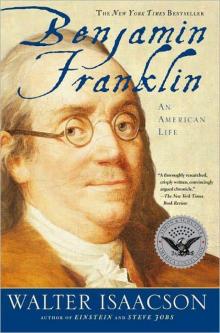 Benjamin Franklin: An American Life
Benjamin Franklin: An American Life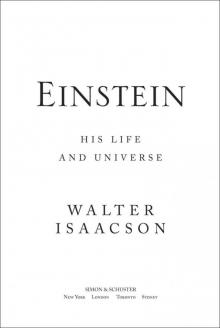 Einstein: His Life and Universe
Einstein: His Life and Universe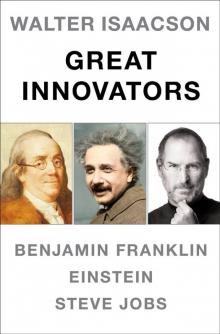 Walter Isaacson Great Innovators e-book boxed set
Walter Isaacson Great Innovators e-book boxed set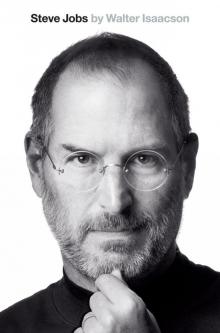 Steve Jobs
Steve Jobs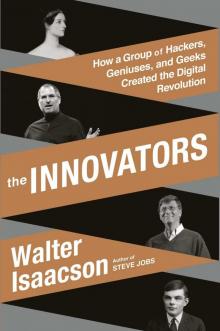 The Innovators
The Innovators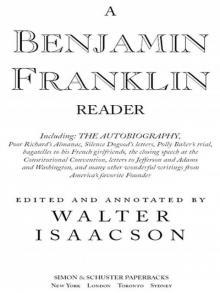 A Benjamin Franklin Reader
A Benjamin Franklin Reader